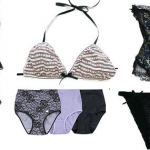Popping the question is one of those unforgettable moments in life. He may think your answer will be yes, but there’s always just a little bit of doubt in the back of his mind. So, let’s say you did say yes. You’re completely elated that your now fiancé has popped the question. Congratulations. Unfortunately, there’s one problem – he doesn’t have a ring…yet. Sometimes proposal anxiety can bleed over into the process of buying an engagement ring. That being said, it’s not uncommon for men to have their fiancées help out with the ring buying decision. And, why not? Engagement rings are an investment and he wants to ensure your ring is as perfect as you are! Don’t know much about diamonds or engagement rings? No worries. You & your fiancé can figure it out right now.

Diamonds
What is a Diamond, exactly?
What is it about diamonds that makes them unlike any other mineral on earth? Most of us know that the Hope diamond is one of the largest, most valuable and most rare gemstones in the world, but what other qualities does a diamond possess?
· A diamond is the hardest known natural substance on earth. On the Mohs scale, the universally accepted scale used to measure the hardness of minerals, it is given the highest rating of 10. That is 40 times as hard as the next hardest mineral, Corundum (9 on the Mohs Scale).
· At 7,362 degrees Fahrenheit, diamonds have the highest melting point of any substance.
· A diamond is the best conductor. It’s cool to the touch under normal conditions, but when a heat source is applies and then removed, the mineral retains that heat for a long time thereafter.
· No other substance can bend white light to create the different colors of the light spectrum as well as diamonds. A diamond’s refractive index is superior to all other minerals.
· Diamonds can be over a billion years old.
Why Diamonds Sparkle
When light hits a perfectly cut diamond in just the right way, you will see the fire they’re famous for. Fire, or the way that light is dispersed, is like the flickering flame of a candle. How a diamond receives and then disperses light in flashes of color depends on the cut of the diamond. The angle of each cut and the symmetry of the cuts in a diamond will allow more light to pass through and be reflected or diffused. A skilled diamond cutter pays particular attention to the length, depth and placement of each cut to bring out the sparkle in every diamond ring.
Cutting a Diamond
Expert diamond cutters make precise cuts taking into account the depth, angle, length and width of each facet that is created. Cutting a diamond in the right proportions and with careful attention to symmetry will enhance the fire and brilliance of a diamond.
Parts of a Diamond
Diamond cutters take into account five defined areas when cutting a diamond.
1. Table – The flat surface on top of a diamond.
2. Crown – The section below the table and the widest part of a diamond.
3. Girdle – The section below the crown that is the midpoint of a diamond.
4. Pavilion – The bottom part of a diamond that is key to a diamond’s ability to reflect light.
5. Culet – The smallest facet of a diamond, located at the very bottom of the diamond.
Choosing the Perfect Cut
Your choice of cuts range from round or square to oval, rectangular and heart-shaped. The following are a few of the most popular cuts for engagement rings.
Round – The most popular cut because it has very high refractive properties and thus more fire than other types of cuts.
Pear – Sometimes called a teardrop diamond, this cut is very elegant and features a rounded bottom and a pointed tip. They create the illusion of longer and more slender fingers.
Cushion – A traditional cut that dates back to the first half of the nineteenth century, it has a square or rectangular shape and presents a vintage look.
Oval – An elongated shape with the same number of facets as a round-cut, the best oval designs have a length-to-width ratio of between 1.3 and 1.65.
Heart – A very appropriate cut for an engagement ring; a heart-shaped diamond usually has 58 facets.
The cut changes the entire look of the engagement ring, so it’s important that you find the perfect fit. Put some research into finding just the right cut, and you’ll both be happy with the ring you’ll be wearing forever.




